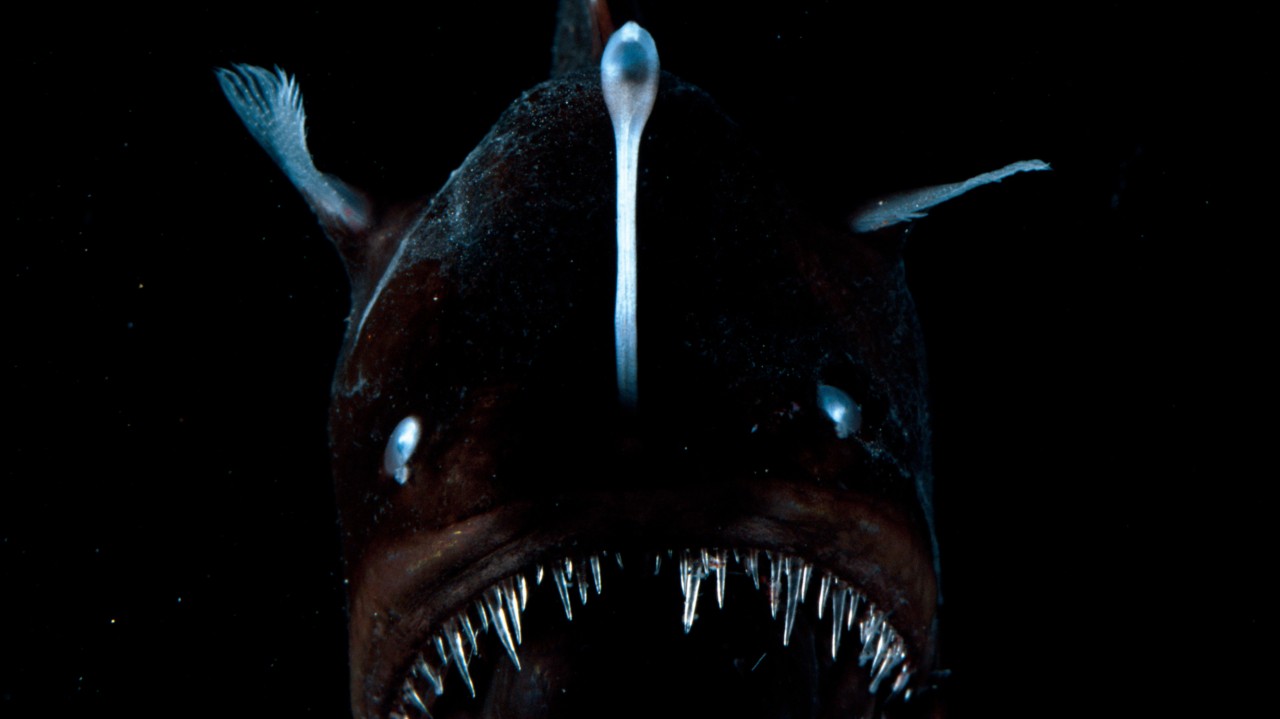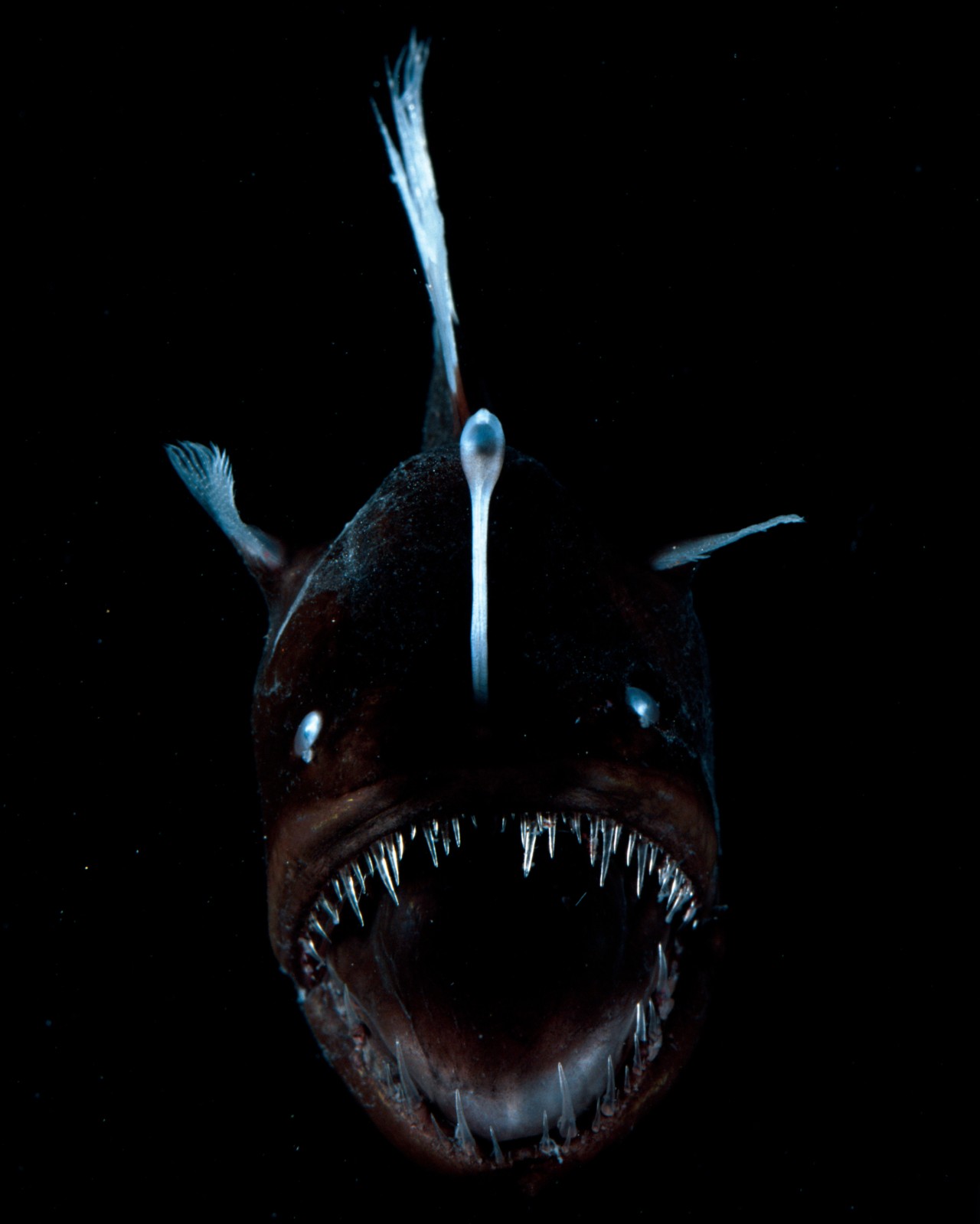

Photograph by David Shale / NaturePL
words by willow defebaugh
“Perhaps everything terrible is, in its deepest being, something that needs our love.”
―Rainer Maria Rilke
It came from the deep. Though with its crescent moon-shaped mouth and sharp, translucent teeth, it could have been shaped from nightmares: the black seadevil anglerfish. It was an unlikely sight, given these creatures rarely make their way out of the dark—only knowing the light from their lures. Perhaps rarer yet was the way it swam into the hearts of many, going viral online after the anglerfish was spotted near the ocean surface by researchers off the coast of Tenerife, Spain.
Anglerfish are a group of over 200 species, each with their own bizarre forms, all evolved to dwell in the darkness of the deep sea. Their eyes are adapted to low light conditions, hence why this sighting was so unusual, and possibly the first of its kind to be documented; this species typically lives between 600 and 6,000 feet below the waves. And while some anglerfish can grow to a frightening 4 feet long, the kind spotted only reaches about 6 inches.
As much as anglerfish inspire fear, females also instigate awe with their bioluminescent lanterns. The first spine of their dorsal fin is extended into a filament called an illicium, the end of which holds a sac full of glowing bacteria. In the midnight zone, other organisms are rare, so rather than expend energy to seek out prey, anglerfish wait for other fish and crustaceans to be lured to their light—and then devour them with gaping jaws, capable of eating creatures twice their size.
But the abyss can be lonely. In order to mate, some anglerfish have adapted another unique strategy for survival. Males have a strong sense of smell, capable of scenting females’ pheromones over long distances. When a male finds a female, he will latch onto her with his teeth and slowly fuse to her. Skin to skin, they become one—even coming to share a single bloodstream. She provides him with nutrients, and he provides her with sperm to reproduce.
Scientists have yet to identify what made the celebrity seadevil swim toward the surface before perishing. One theory is that it was a response to its environment: weather events during El Niño can impact ocean currents and temperatures, and cause deep sea creatures to seek new waters. Another is that it was driven by forces out of its control, trapped in a column of rising warm water from volcanic activity. Or, it ate a fish with an air-filled bladder, buoying it upward.
What if it was something else that lured the anglerfish to the surface? What if it was some foreign form of phototaxis, movement in response to light? What if it longed for a lantern other than the one it carried? What if it was drawn to the sun? Perhaps Rilke was right that everything monstrous is something in need of our love. After all, we fear what we do not understand—a truth we are seeing surface in many waters today, politically and culturally.
Love can be beautiful and terrifying, and no small feat. It can be a thing with teeth, a meeting of flesh and a merging of souls, an otherworldly luminescence that asks: How do we join together? Maybe the black seadevil that found its way to unfamiliar waters, and the response it elicited from a species much stranger than its own, spoke to some aspect of our collective unconscious now ready to emerge from the deep. One that says: I will be your light in the dark.
The Deep-Sea Anglerfish That Inspired Love on the Surface